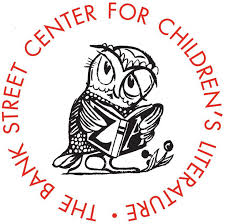In this slim. reissued book, author and Jutta's daughter, Debbie Levy, has poignantly recreated her mother's memories of living in Nazi Germany in the year 1938. Each chapter begins with a page from Jutta's original Poesiealbum, written in German with an added English translation. This is followed by a free verse poem written by Levy. Each verse is written in her mother's voice as a young girl and really captures what was happening and what Jutta thought about what she was witnessing and experiencing within her family, her friends, and Germany itself.
By 1938, Jews in Germany already feeling the force of Nazi power, losing basic rights and freedoms because of changing laws designed to limit Jewish lives more and more. Only wanting to have a somewhat normal childhood, the entries in Jutta's Poesiealbum and the accompanying poems document just how worried by and scared of the Nazis and their futures these children were:
"Yes, I am eleven-and-three-quarters years old.
I used to worry about my grades
and having to eat stuffed cabbage.
But now I wonder,
what will become of us?
What will become of me?
As persecution and roundups being to increase along with Nazi cruelties, the Salzberg family decides that it is time to emigrate to the United States with the help of relatives already living there. But getting Nazi permission to leave the country isn't easy and acquiring the necessary visas from the American consulate is just as difficult. Finally, out of desperation, Jutta's father takes a drastic step in front of his family and the consul. Standing at the window in the consul's office, he tells him:
"that if he must wait longer for visas,
he might as well jump out the window.
'I might as well jump,'
Father tells the man,
'because the Nazis will be
murdering me soon anyway.'"
Finally, with approved visas, the Salzbergs are able to leave Germany, leaving behind family, friends, possessions, and most of their money. Yet, even their train trip to Paris is fraught with tension and fear until they reach the French border. Imagine the mixed emotions they must have felt when they discovered that their arrival in France on November 11, 1938 is the same day as the Kristallnacht pogrom.
The Year of Goodbyes a small book, yet it is very compelling look at what was happening in Nazi Germany through the eyes of a young victim/witness. It is particularly interesting to read what Jutta's friends wrote in the book, thoughts that cover a broad range of fears and hopes. Debbie Levy researched the fate of the family and friends left behind, and you can read about them in her Afterward. Many did not survive the Holocaust, but some did and Jutta was able to reconnect with some of these friends later in her life.
 |
| Jutta Salzberg and her daughter Debbie Levy in 2010 |
Besides the Afterward, back matter includes a collection of photos of Jutta, her family and friends, a Time Line, a Note on Sources used, and a Selected Bibliography.
You can find a very useful Discussion Guide for The Year of Goodbyes, provided by the publisher, HERE
Here is the book trailer for the original edition of The Year of Goodbyes, still relevant for this edition:
This book is recommended for readers age 10+
This book was purchased for my personal library















































